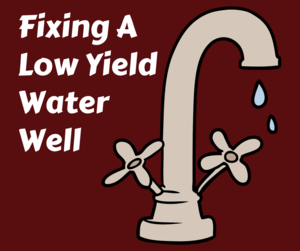CALL TODAY 1-800-441-6281
CALL TODAY 1-800-441-6281

What Size Geothermal Heat Pump Do I Need
When it comes to installing a new geothermal heating system, there is no such thing as one-size-fits-all. Having a trained HVAC or geothermal technician analyze the heating, and cooling demands of your home will help your technician determine the right size heating system and geothermal loop field. Taking the time to properly size your geothermal system and hiring a quality contractor to design the system accurately will ensure a long lifespan and low operating costs.
THE RISK OF AN UNDERSIZED SYSTEM
A geothermal heat pump has the potential to save you as much as 70% on your heating and cooling bills but with an undersized system, you may find yourself paying for it in both comfort and savings. Systems are sized in tons. An average home might be 3 tons while a larger home might be 6 tons. Larger systems are more expensive because of the increased size of the loop field and larger geothermal unit.
An undersized system won’t have the ability to meet your heating and cooling needs. This could result in high utility bills because the heat pump is running more, trying to keep up, and is using more electricity. An undersized system will prevent a homeowner from reaping the greatest benefits of geothermal, which are lower energy bills.
TOO BIG CAN CAUSE PROBLEMS TOO
Some people may think installing a system that can provide heating and cooling above and beyond what the home needs is a safe way to ensure the perfect indoor climate year-round, but this approach has problems of its own. An over-sized system can produce too much airflow resulting in extremely short run times that cause the system to cycle on and off too frequently. This also reduces efficiency and results in higher electric bills.
An over-sized unit will also affect on the climate levels inside the home. During hot and humid weather, short run times will cool the home but cannot properly remove humidity, leaving the air, and the occupants of the home, feeling sticky. Some units are programmed to operate for a set period regardless of temperature to reduce this short run time risk, but if the equipment is oversized it can overheat the home in the winter and cause frosty conditions in the summer.
EXTERNAL COMPONENTS MATTER
Geothermal systems are based on the heating/cooling load of the building. There are primarily two types of outside heat exchangers, closed loop, and open loop. Each has their pros and cons but in both cases, the outside heat exchanger needs to be appropriately sized to provide the energy required to meet the heating/cooling load of the building. If you would like to know more about geothermal and the type of system that would best meet your needs, contact us and one of our geothermal experts will answer your questions and explain the difference or click here for more information.
Skillings & Sons has installed nearly 500 geothermal systems across New Hampshire and Massachusetts in many different building sizes and types. Our certified geothermal technicians have the expertise to drill and install an appropriately sized loop field on a broad range of properties. Contact us for more information on our geothermal installations today.

